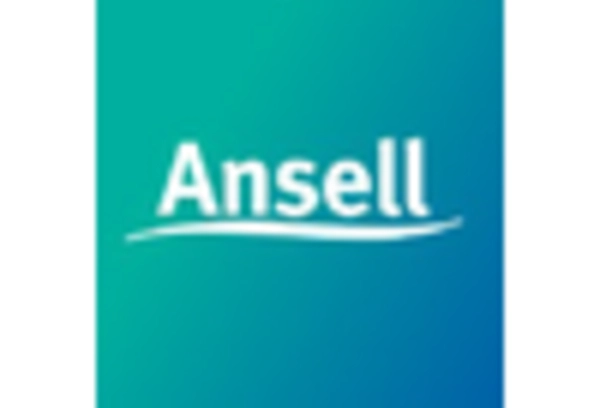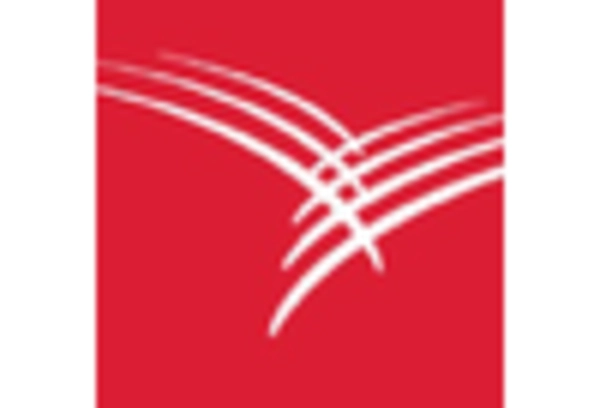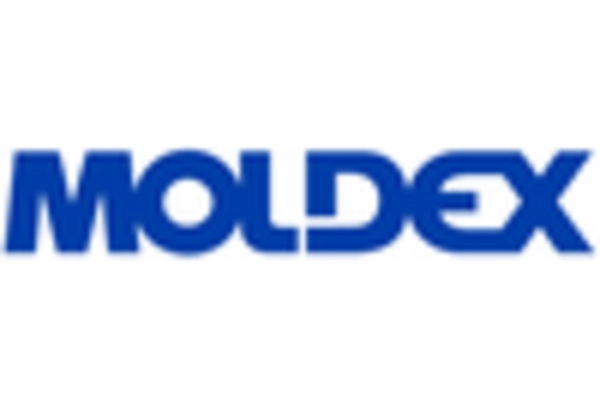Rising Healthcare Expenditures
The healthcare personal-protection-equipment market is experiencing growth driven by rising healthcare expenditures in the United States. As healthcare costs continue to escalate, institutions are increasingly investing in protective equipment to ensure the safety of both patients and healthcare workers. In 2025, healthcare spending in the US is projected to reach approximately $4.3 trillion, which represents a significant increase from previous years. This surge in spending is likely to enhance the demand for personal-protection equipment, as hospitals and clinics prioritize safety measures. Furthermore, the emphasis on quality care and patient safety is pushing healthcare providers to adopt advanced protective gear, thereby propelling the healthcare personal-protection-equipment market forward.
Technological Innovations in PPE
The market is witnessing a surge in technological innovations that enhance the functionality and effectiveness of protective gear. Advancements in materials science and engineering are leading to the development of lighter, more durable, and more comfortable PPE. For example, the introduction of antimicrobial fabrics and smart textiles is revolutionizing the way personal-protection equipment is designed and utilized. These innovations not only improve user comfort but also enhance safety, making them more appealing to healthcare providers. As technology continues to evolve, the healthcare personal-protection-equipment market is expected to expand, driven by the demand for cutting-edge protective solutions.
Increased Focus on Infection Control
The healthcare personal-protection-equipment market is significantly influenced by the heightened focus on infection control within healthcare settings. With the ongoing emphasis on preventing healthcare-associated infections (HAIs), hospitals and clinics are prioritizing the procurement of high-quality personal-protection equipment. According to recent data, HAIs affect approximately 1 in 31 hospital patients on any given day, underscoring the critical need for effective protective measures. This awareness is driving healthcare facilities to invest in advanced PPE solutions, which are essential for safeguarding both patients and healthcare professionals. As a result, the healthcare personal-protection-equipment market is likely to witness sustained growth as institutions strive to enhance their infection control protocols.
Evolving Workforce Safety Regulations
The market is being shaped by evolving workforce safety regulations in the United States. Regulatory bodies are continuously updating guidelines to ensure the safety of healthcare workers, which in turn drives the demand for personal-protection equipment. For instance, the Occupational Safety and Health Administration (OSHA) has implemented stringent regulations regarding the use of PPE in healthcare settings. Compliance with these regulations is not only a legal requirement but also a moral obligation for healthcare providers. As a result, the market is likely to see an increase in the adoption of compliant PPE solutions, thereby fostering growth in the healthcare personal-protection-equipment market.
Growing Public Awareness of Health Risks
The market is being propelled by growing public awareness of health risks associated with inadequate protection in healthcare environments. As patients and healthcare workers become more informed about the potential dangers of exposure to infectious agents, the demand for personal-protection equipment is likely to increase. Educational campaigns and media coverage surrounding health risks have heightened the urgency for effective protective measures. Consequently, healthcare facilities are compelled to invest in high-quality PPE to meet the expectations of both staff and patients. This shift in public perception is expected to contribute positively to the growth of the healthcare personal-protection-equipment market.

















Leave a Comment